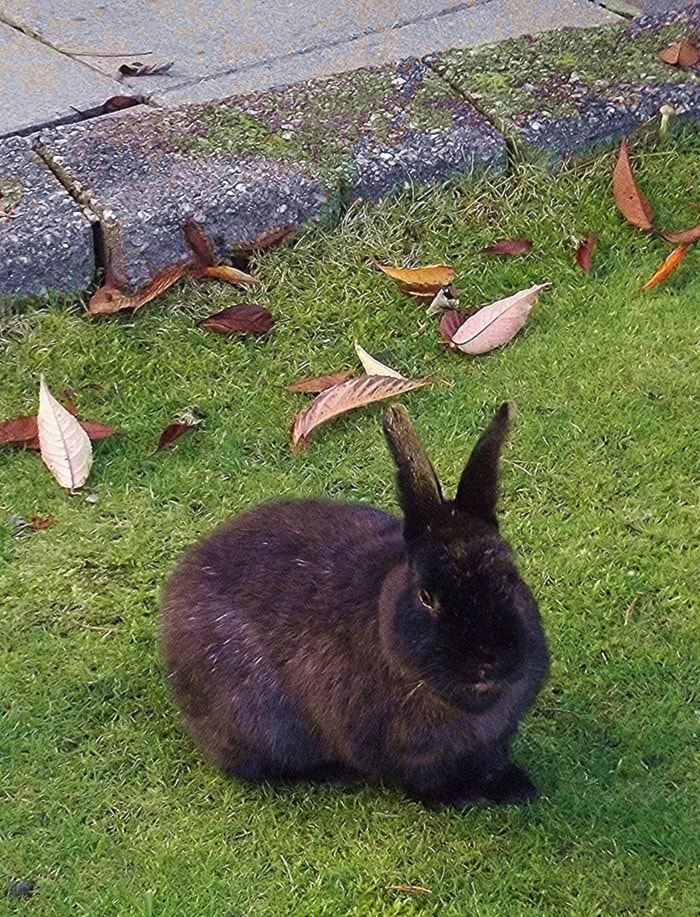I was in Richmond recently doing an on-site inspection for the re-design of an established 8th-floor roof garden.
This spacious landscape includes mature trees, lawns, walkways, mixed gardens and benches for the use of residents and guests.
What caught me off guard was the presence of about four jet-black domestic rabbits, who lazily grazed on the lawn and paid me no further attention once they hopped up to me and discovered that I had no snacks to offer.
The landscaper I was working with told me that he had already live-trapped and removed rabbits in the past, but someone keeps re-introducing them.
The garden is being refurbished much in part to the fact that about 80 per cent of the existing trees are dead, with a closer examination showing that the bark had been eaten by those cute cottontails right from soil line to about the height of a standing rabbit.
Other bunny-related problems included the digging of warrens in the shallow soils of the rooftop garden and the shredding of protective landscape fabric (presumably for bedding), both of which may result in the failure of the waterproof membrane.
Then there was the abundance of rabbit pellets, or feces, much of it accumulated near the patios of the suites situated adjacent to the garden.
It was interesting to note that while all the Japanese maple (Acer palmatum) and honey locust (Gleditsia triacanthos) had their bark eaten, the black pines (Pinus nigra) and tree-form smokebush (Cotinus coggygria) were left unscathed, so obviously there is a food preference with rabbits.
One could also see that given the many gaps in the plantings, that our Coney friends had had their way with many of the missing shrubs and perennials – although the rhododendrons and ‘Otto Luyken’ laurels (Prunus laurocerasus) were left untouched.
I have also seen this preference at many wholesale suppliers in the Fraser Valley, where I go shopping for new nursery stock, with selective beds of one particular shrub often being ringed with chicken wire to keep the rabbits at bay.
So how do we keep these furry little friends in check when we are dealing with established gardens?
There are several strategies, including barriers or repellents.
Rabbits have a keen sense of smell and can be kept at bay using commercial blood- or chili-pepper-based repellents, but using a fish fertilizer or spreading fresh crushed garlic around also seems to work.
Barriers are more problematic and time consuming, although a low fencing of either hardware cloth or chicken wire ( three-quarters of an inch or less) erected to a height of 24-30” and buried 6-12” (if possible) will keep them out.
These same materials can be used around the base of established trees to keep the rabbits from eating bark and girdling the tree.
You should also keep an eye out for irrigation piping or buried electrical lines, both of which are often chewed.
The other way to go is to create a new garden or replace damaged plants with rabbit-resistant varieties, keeping in mind that the palate of individual bunnies can vary to include some of these.
For trees, try blue spruce, Sumac (Rhus), sweet gum (Liquidambar) or even tulip tree (Liriodendron).
Less-tasty shrubs include lavender, Forsythia, lilac, mountain Laurel (Kalmia latifolia), Yucca and some shrubby dogwoods, such as Cornus alba.
Pungent perennials such as Salvia ‘East Friesland’, Artemisia, Russian sage (Perovskia) and bee balm seem to be resistant, as well as Bergenia, Shasta Daisy, Astilbe, foxglove, Lily-of-the-Valley and Brunnera.
And lastly, those cute little bunnies seem to have little appetite for vines such as Clematis and Campsis.
– Mike Lascelle is a local nursery manager and gardening author (hebe_acer@hotmail.com).
